Compound X consists of molecules. Choose the letter corresponding to the correct answer from the choices given below:
The type of bonding in X will be :
ionic
electrovalent
covalent
molecular
To determine the type of bonding in compound X, we will analyze the information given in the question step by step.
Step 1: Understand the Composition of Compound X
The question states that compound X consists of molecules. This is a crucial piece of information because it indicates that the compound is made up of distinct units (molecules) rather than individual atoms or ions.
Hint: Look for keywords in the question that indicate the structure of the compound.
Step 2: Identify the Types of Chemical Bonds
There are primarily two types of chemical bonds to consider:
- Ionic Bonds: These occur between positively and negatively charged ions. Ionic compounds typically form a lattice structure and do not consist of discrete molecules.
- Covalent Bonds: These occur when atoms share electrons to form molecules. Compounds with covalent bonds are made up of molecules.
Hint: Recall the characteristics of ionic and covalent bonds to differentiate between them.
Step 3: Analyze the Implication of "Molecules"
Since compound X is described as consisting of molecules, it implies that the bonding within the compound is likely covalent. In covalent compounds, atoms share electrons, resulting in the formation of discrete molecular units.
Hint: Think about what "molecules" imply regarding the nature of the bonds.
Step 4: Conclusion
Based on the analysis, since compound X consists of molecules, the type of bonding present in compound X is covalent bonding.
Final Answer: The type of bonding in compound X will be covalent bonds.
The question states that compound X consists of molecules. This is a crucial piece of information because it indicates that the compound is made up of distinct units (molecules) rather than individual atoms or ions.
There are primarily two types of chemical bonds to consider:
- Ionic Bonds: These occur between positively and negatively charged ions. Ionic compounds typically form a lattice structure and do not consist of discrete molecules.
- Covalent Bonds: These occur when atoms share electrons to form molecules. Compounds with covalent bonds are made up of molecules.
Since compound X is described as consisting of molecules, it implies that the bonding within the compound is likely covalent. In covalent compounds, atoms share electrons, resulting in the formation of discrete molecular units.
Based on the analysis, since compound X consists of molecules, the type of bonding present in compound X is covalent bonding.
Topper's Solved these Questions
- BOOK - ICSECHAPTER - CHEMICAL BONDING EXERCISE - Questions from Previous ICSE Board Papers (2006)5videos
CHEMICAL BONDING
- BOOK - ICSECHAPTER - CHEMICAL BONDING EXERCISE - Questions from Previous ICSE Board Papers (2007)4videos
CHEMICAL BONDING
- BOOK - ICSECHAPTER - CHEMICAL BONDING EXERCISE - Additional Questions for Practice32videos
CHEMICAL BONDING
- BOOK - ICSECHAPTER - ANALYTICAL CHEMISTRY-USE OF AMMONIUM & SODIUM HYDROXIDEEXERCISE - Additional Questions6videos
ANALYTICAL CHEMISTRY-USE OF AMMONIUM & SODIUM HYDROXIDE
- BOOK - ICSECHAPTER - CHEMISTRY 2011EXERCISE - SECTION-II48videos
CHEMISTRY 2011
Similar Questions
Compound X consists of molecules. Choose the letter corresponding to the correct answer from the choices given below:
In the liquid state, X will:View SolutionCompound X consists of molecules. Choose the letter corresponding to the correct answer from the choices given below:
X is likely to have a : [A] low melting point and high boiling point. [B] high melting point and low boiling point. [C] low melting point and low boiling point. [D] high melting point and high boiling point.View Solution
Knowledge Check
- Question 1 - Select One
Choose the correct answer from the options given below :
A compound with low boiling point, is :ASodium chlorideBCalcium chlorideCPotassium chlorideDCarbon tetrachloride
Compound X consists of molecules.
Choose the letter corresponding to the correct answer from the choices A, B, C and D given below:
X is likely to have aView SolutionMatch the columns and choose the correct answer from the options given below
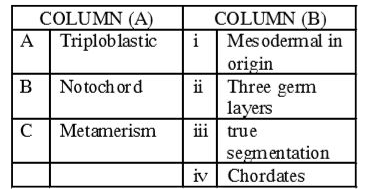 View Solution
View SolutionMatch the columns and choose the correct answer from the options given below
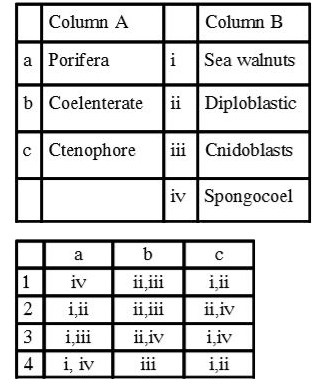 View Solution
View SolutionMatch the columns and choose the correct answer from the options given below
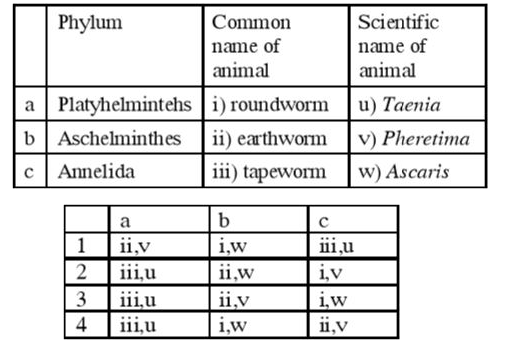 View Solution
View SolutionMatch the columns and choose the correct answer from the options given below
 View Solution
View SolutionMatch the columns and choose the correct answer from the options given below
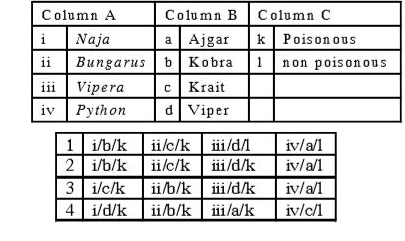 View Solution
View SolutionMatch list I with list II and choose the correct answer from the codes given below :
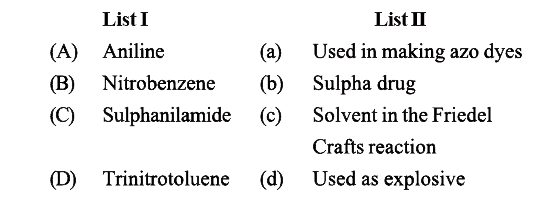 View Solution
View Solution

